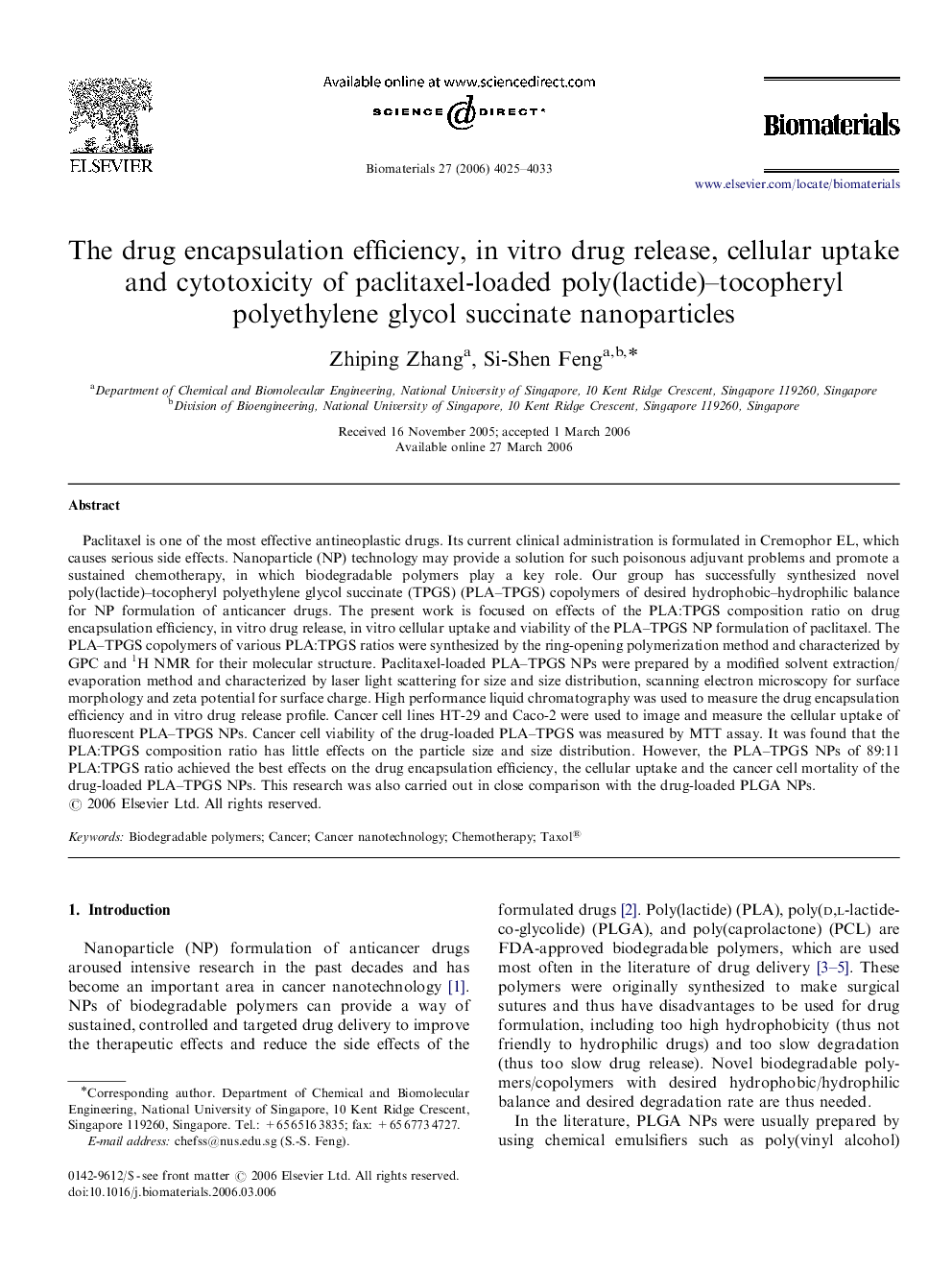| Article ID | Journal | Published Year | Pages | File Type |
|---|---|---|---|---|
| 11410 | Biomaterials | 2006 | 9 Pages |
Paclitaxel is one of the most effective antineoplastic drugs. Its current clinical administration is formulated in Cremophor EL, which causes serious side effects. Nanoparticle (NP) technology may provide a solution for such poisonous adjuvant problems and promote a sustained chemotherapy, in which biodegradable polymers play a key role. Our group has successfully synthesized novel poly(lactide)–tocopheryl polyethylene glycol succinate (TPGS) (PLA–TPGS) copolymers of desired hydrophobic–hydrophilic balance for NP formulation of anticancer drugs. The present work is focused on effects of the PLA:TPGS composition ratio on drug encapsulation efficiency, in vitro drug release, in vitro cellular uptake and viability of the PLA–TPGS NP formulation of paclitaxel. The PLA–TPGS copolymers of various PLA:TPGS ratios were synthesized by the ring-opening polymerization method and characterized by GPC and 1H NMR for their molecular structure. Paclitaxel-loaded PLA–TPGS NPs were prepared by a modified solvent extraction/evaporation method and characterized by laser light scattering for size and size distribution, scanning electron microscopy for surface morphology and zeta potential for surface charge. High performance liquid chromatography was used to measure the drug encapsulation efficiency and in vitro drug release profile. Cancer cell lines HT-29 and Caco-2 were used to image and measure the cellular uptake of fluorescent PLA–TPGS NPs. Cancer cell viability of the drug-loaded PLA–TPGS was measured by MTT assay. It was found that the PLA:TPGS composition ratio has little effects on the particle size and size distribution. However, the PLA–TPGS NPs of 89:11 PLA:TPGS ratio achieved the best effects on the drug encapsulation efficiency, the cellular uptake and the cancer cell mortality of the drug-loaded PLA–TPGS NPs. This research was also carried out in close comparison with the drug-loaded PLGA NPs.
